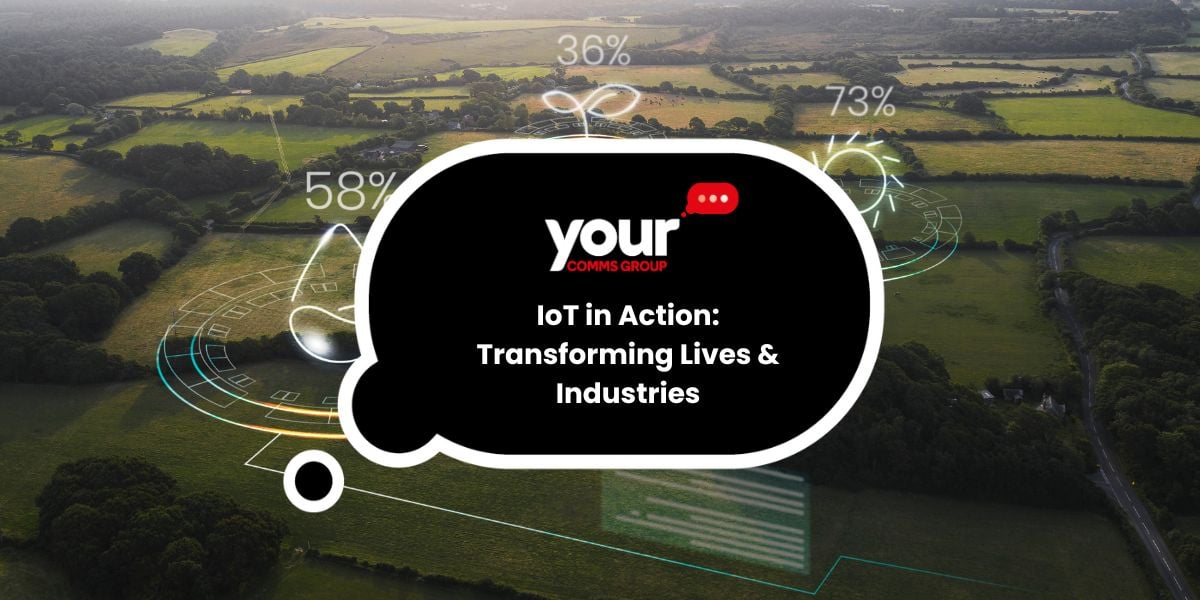IoT: The Key to Energy Efficiency for Sustainable Businesses
Organisations looking to reduce their environmental impact and improve operational efficiency now prioritise sustainability by minimising their...
2 min read
James Etherington : May 29, 2024 3:00:00 PM

We live in a world where ecological emergencies are even more pressing, as we need innovations that help us enhance efficiency in our work while still being responsible for nature. These innovations are applied in every industry, including transportation, which can be revolutionised with the Internet of Things (IoT).
How precisely the IoT can shape the future of transportation?
It is no longer a possibility but already needs implementation, as it aims to find ways to move people and goods that don't harm the environment, like reducing harmful gases released. Adapting our businesses to sustainable practices is essential. Not only will it help us optimise day-to-day operations, but it will also help Mother Nature.
Shall we take a closer look at how IoT is helping make transportation more environmentally friendly and has a significant role in lowering vehicle pollution? Let's explore sustainable transportation more in this article!

Several innovations apply IoT to support sustainable transportation, such as below:
Smart traffic control systems can easily monitor and manage traffic flows in real-time with camera sensors connected to IoT-enabled traffic lights. By streamlining traffic signals and minimising congestion, smart traffic management systems reduce idle time, which is excellent for vehicles because it lowers fuel consumption.
IoT-driven sustainable transportation is led by connected and self-driving cars, which must communicate with traffic infrastructure and one another. This communication allows for smoother traffic flow, reduced accidents, and better fuel efficiency, which lowers the carbon footprint of CAVs.
The emergence of EVs is a revolutionary innovation for sustainable transportation. IoT technology dramatically aids in the remote monitoring, management, and optimisation of EV charging stations. This includes functionalities such as real-time data collection, payment integration, and predictive maintenance. Furthermore, IoT-powered smart grids can control power distribution to avoid overloading and guarantee a consistent flow of renewable energy.
Thanks to IoT, real-time tracking and data analytics are now possible, and public transportation has changed. Bus and train real-time schedule information is available for passengers, reducing their wait time and enhancing convenience. IoT gives transit authorities valuable usage pattern data that helps to optimise schedules and routes for more eco-friendly operations.
The IoT has also greatly benefited fleet management and logistics. Fleet managers can use IoT devices to optimise fuel consumption routes and monitor vehicle health. By analysing data from these devices, companies can reduce fuel usage and minimise vehicle wear and tear, contributing to lower carbon emissions.

Sustainable transportation comes with its benefits and impacts on reducing carbon footprint, such as:

One of the most significant advantages of IoT for sustainable transportation is using data to inform decisions. IoT devices gather large volumes of data, which can be analysed to find trends and improve inefficiencies, lowering emissions.
IoT technology monitors and enhances smart energy use in transportation systems. For example, when a machine or car consumes more energy than it should, sensors can identify it and initiate corrective action. This ensures that energy is used efficiently, reducing overall consumption.
Another crucial IoT impact is real-time vehicle emissions monitoring with sensors that can also report back to fleet managers or drivers. This will allow faster, more immediate action to address the issue, prevent emission increases, and promote cleaner air.
Conclusion
Given the importance of eco-friendly transportation innovation, embracing IoT technologies and investing in sustainable solutions is essential. Your Comms Group provides secure IoT business solutions that enable devices to switch or connect between networks. Consult us now to future-proof efficient business operations.

Organisations looking to reduce their environmental impact and improve operational efficiency now prioritise sustainability by minimising their...

The Internet of Things (IoT) is a transformative technology that connects everyday objects to the Internet, enabling them to collect and exchange...

The Internet of Things (IoT) represents a world where everyday objects are connected to the internet, enabling them to send and receive data. This...